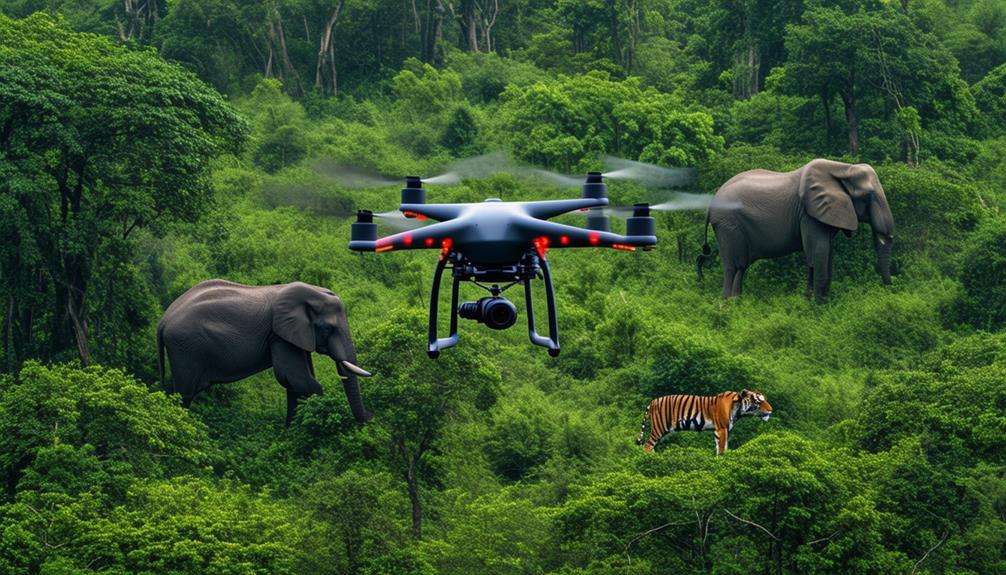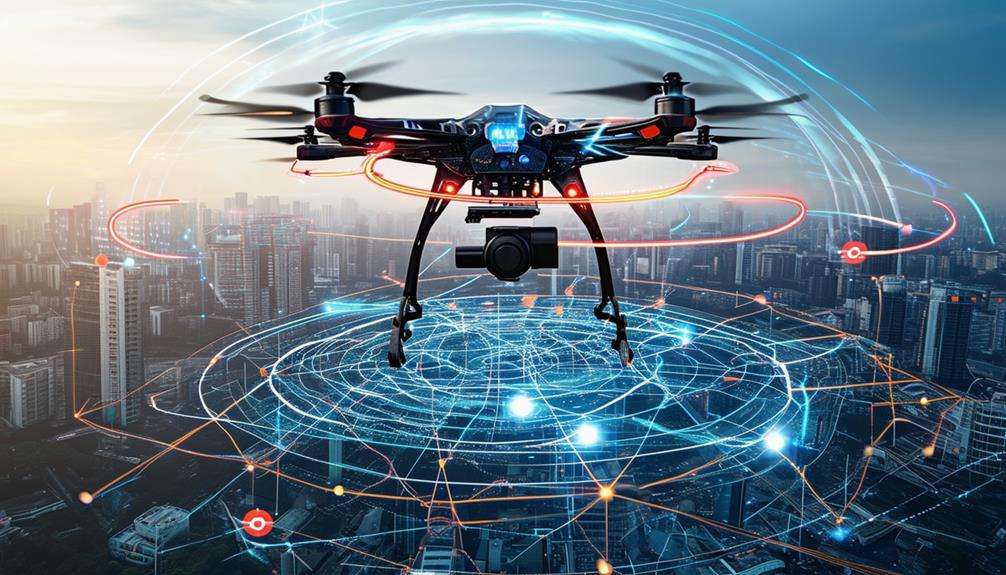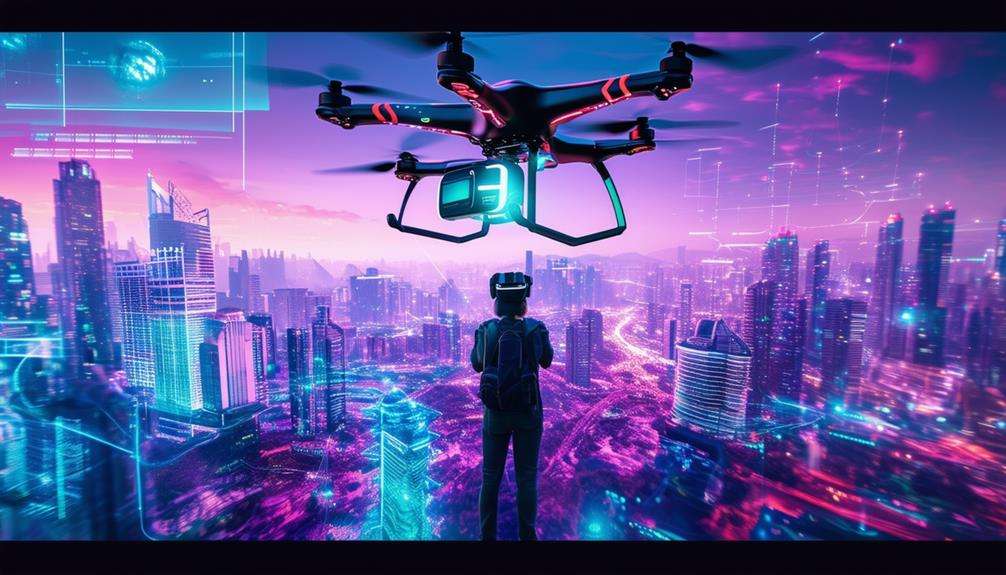How Drones Navigate: From Autopilot to Manual Control
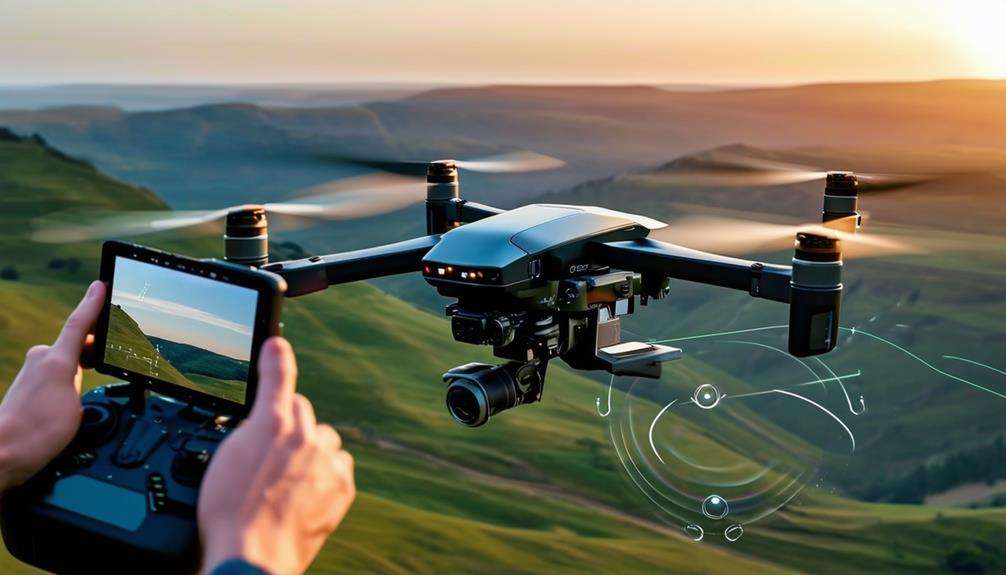
Drones navigate using a combination of sophisticated autopilot systems and manual control. Autopilot systems rely on sensors such as GPS, gyroscopes, and accelerometers to handle routine tasks and execute complex maneuvers autonomously.
However, when immediate intervention is required, skilled pilots can switch to manual control to ensure safety and mission success. This dual approach offers flexibility and adaptability, which are essential for varying circumstances. Curious about how this seamless transition works and the benefits of hybrid control? Let's delve into the intricacies of drone navigation.
Basics of Drone Navigation
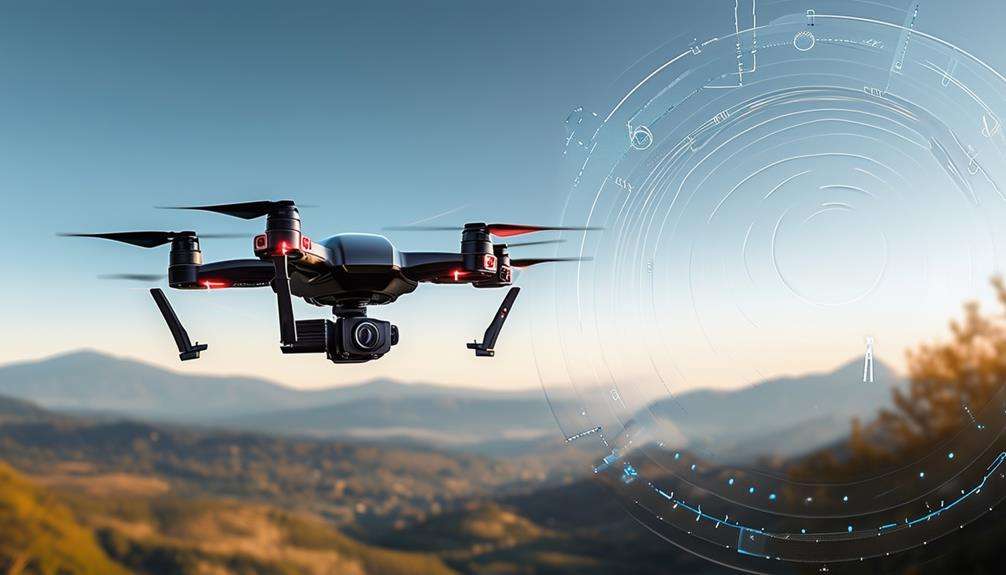
Drone navigation primarily relies on sophisticated autopilot systems that autonomously handle flight operations through a network of sensors. These systems are integral to unmanned aircraft systems, ensuring efficient and smooth flight.
The flight control system uses various sensors, including GPS, gyroscopes, and accelerometers, to determine the drone's position, orientation, and speed. This array of sensors allows the drone to maintain a high degree of autonomy during flight.
Modern drones are capable of executing complex maneuvers and pre-planned missions with minimal human intervention. Navigation software facilitates waypoint navigation and mission planning, enabling users to set specific points for the drone to follow. This functionality is particularly useful for tasks such as aerial photography, surveying, and delivery services.
Nevertheless, manual control is sometimes necessary. For example, if the drone encounters unexpected obstacles or adverse weather conditions, switching from autopilot to manual control allows for safe navigation.
This dual capability ensures flexibility and robustness in flight operations, allowing effective management of the drone under various circumstances. With both autonomous and manual options, your drone operations remain adaptable and reliable.
Autopilot Systems
Autopilot systems significantly enhance drone navigation by enabling fully autonomous operations, from take-off to landing. These systems allow drones to execute complex missions with minimal manual intervention. Here's how they achieve this:
- Automatic Control: Autopilot systems utilize advanced algorithms to manage the drone's flight path, altitude, and speed. This automation lets you concentrate on mission objectives rather than flight mechanics.
- Remote Override: Although the drone operates autonomously, remote control capabilities allow for manual intervention. This feature is crucial for overriding the system during emergencies or making real-time adjustments to the flight plan.
- Mission Planning: These systems excel in mission planning by supporting pre-programmed routes and tasks. You can set waypoints and define specific actions, allowing the drone to execute the plan with precision.
- Redundancy: Safety is paramount. Autopilot systems incorporate multiple redundancy measures, ensuring that if one component fails, others will take over to maintain stability and control.
Equipped with dedicated microcontrollers and the ability to connect multiple modules, autopilot systems offer a robust, reliable, and highly functional solution for modern drone navigation. These features are indispensable for tasks such as aerial surveys, inspections, and other complex operations.
Role of Onboard Sensors
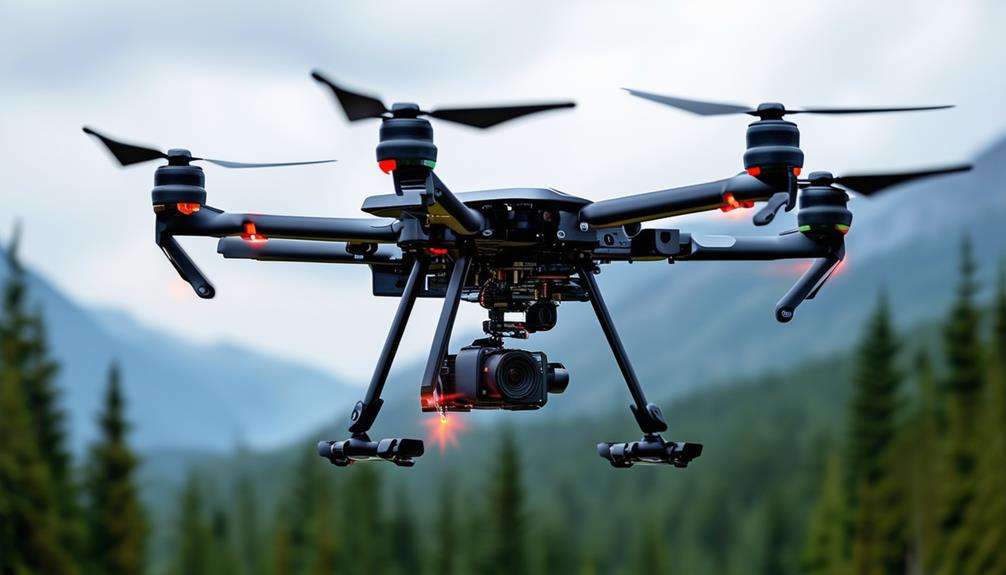
Onboard sensors play a crucial role in a drone's navigation. IMUs, GPS receivers, barometers, and magnetometers are essential components that provide real-time data on the drone's orientation, position, altitude, and magnetic heading.
Autopilot systems rely on the information collected by these sensors to ensure stability and precise control of the drone. By integrating and fusing data from multiple sensors, the drone can navigate through different environmental conditions with reliability. Having access to accurate data from these sensors allows the drone to make informed decisions and adjustments during flight, enhancing overall performance and safety.
Sensor Types and Functions
Onboard sensors such as accelerometers, gyroscopes, magnetometers, and barometers are essential for providing comprehensive data on a drone's orientation, velocity, altitude, and environmental conditions. These sensors operate in synergy to ensure the drone flies smoothly and accurately. Through sensor fusion techniques, data from these multiple sensors is combined to deliver a more precise understanding of the drone's state. This continuous analysis and integration of sensor data enhance navigation and control capabilities.
Here's how these sensors function:
- Accelerometers: Measure the drone's acceleration in various directions, indicating changes in speed and tilt.
- Gyroscopes: Detect rotational movements, aiding in stability and orientation maintenance.
- Magnetometers: Function like a digital compass, providing heading information to ensure the drone knows its direction.
- Barometers: Measure air pressure to determine the drone's altitude, crucial for maintaining a steady flight level.
Redundant sensor setups are also critical. They ensure that if one sensor fails, others can compensate, maintaining reliable and accurate navigation. The integration of onboard sensors with effective data processing forms the backbone of a drone's ability to navigate autonomously and respond accurately to manual controls.
Data Processing Techniques
Data processing techniques are crucial in converting raw sensor data into actionable navigation information for drones. Onboard sensors, such as IMUs, GPS receivers, altimeters, magnetometers, and airspeed sensors, collect data on the drone's orientation, position, speed, and environmental conditions. However, this raw data needs to be processed and synthesized to be useful.
Advanced algorithms play a key role in integrating and interpreting this data. One such technique is sensor data fusion, which combines inputs from multiple sensors to create a cohesive and accurate picture of the drone's surroundings and status. This integration is essential for minimizing errors and increasing reliability.
Redundant sensors further enhance this reliability by allowing cross-verification of data. If one sensor fails or provides incorrect readings, redundant sensors ensure the drone can still navigate accurately. These techniques enable drones to operate autonomously or with minimal human intervention, significantly improving efficiency and safety.
Real-Time Environmental Monitoring
Leveraging onboard sensors, drones can deliver real-time data essential for monitoring environmental conditions effectively. These sensors are crucial in detecting variations in temperature, humidity, and air quality, making them invaluable for applications such as research, surveillance, and disaster response. By collecting and transmitting this data to the drone's autopilot system, sensors enable real-time adjustments, ensuring safe and efficient navigation.
Here's how onboard sensors enhance environmental monitoring:
- Cameras: Capture high-resolution images and videos to visually assess environmental conditions.
- Thermal Imaging: Identify heat signatures, useful for spotting wildfire hotspots or monitoring wildlife.
- LiDAR: Generate detailed 3D maps of landscapes, vital for topographical studies and vegetation analysis.
- Gas Detectors: Measure concentrations of gases like CO2 or methane, crucial for monitoring air quality and detecting leaks.
These sensors work together to provide a comprehensive overview of the environment. The real-time data they collect is crucial for making informed decisions in scenarios ranging from natural disasters to scientific research.
Ground Control Communication
Ground control communication is essential for sending commands to your drone and receiving real-time telemetry data. It allows you to monitor your drone's status, adjust flight parameters, and access critical information, ensuring safe and efficient operations. This communication is typically achieved through wireless methods, such as radio frequencies or data links, facilitating seamless interaction between the drone and the Ground Control Station (GCS).
The Ground Control Station provides a user-friendly interface for managing and controlling your drone. It displays telemetry data, including altitude, speed, battery levels, and GPS coordinates. This data helps you make informed decisions during flight and respond promptly to any issues.
Here's a summary of key elements in ground control communication:
| Element | Description |
|---|---|
| Ground Control Station | Interface for managing and controlling the drone |
| Telemetry Data | Real-time information on altitude, speed, battery, GPS |
| Wireless Communication | Uses radio frequencies or data links for connectivity |
Effective ground control communication is the backbone of successful drone operations. Leveraging the GCS and telemetry data ensures efficient control, enabling your drone to perform its tasks effectively and safely.
Switching to Manual Control
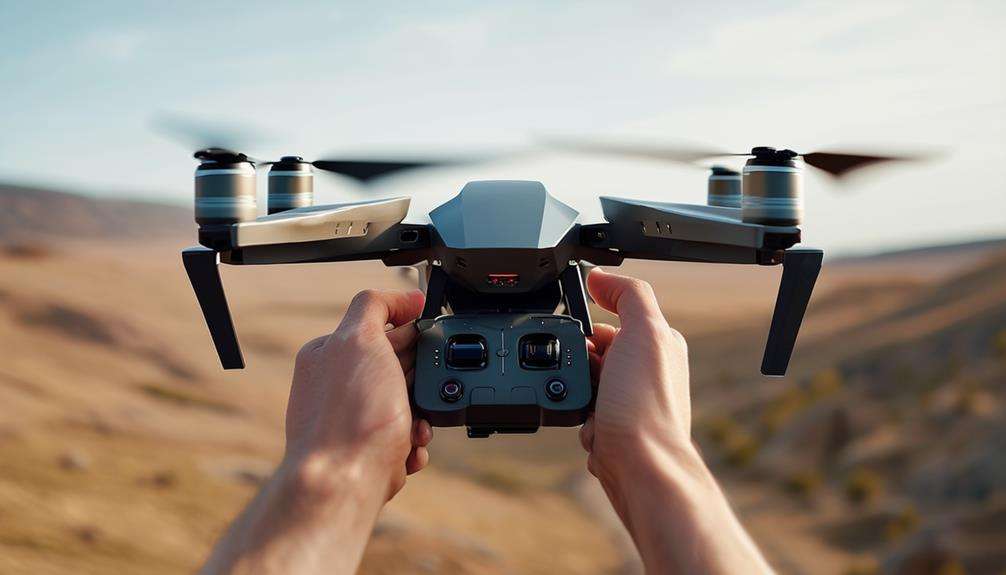
In the event of autopilot system failure, you must swiftly switch to manual control to maintain command of your drone. This transition can be challenging, particularly in critical situations, making it essential to practice various scenarios. Proficient operators are crucial for effective navigation and safety during these changes.
Manual Control Scenarios
In manual control scenarios, pilots must swiftly take command to navigate the drone through challenging conditions or autopilot failures. These situations demand quick thinking and skilled piloting to guarantee safety and successful mission completion. When autopilot systems falter or unexpected situations arise, you must be ready to switch to manual control instantly.
Consider these scenarios where manual intervention becomes vital:
- Autopilot Failure: When the drone's autopilot system malfunctions, you need to step in to prevent crashes or loss of the drone.
- Weather Disturbances: Sudden gusts of wind or severe weather conditions can interfere with the drone's automated navigation, requiring your expertise.
- System Malfunctions: Hardware issues, such as sensor failures or communication disruptions, can necessitate immediate manual control for safe navigation.
- Unexpected Obstacles: Unpredicted obstacles or changes in the environment, like birds or other drones, can only be managed effectively through manual control.
Your ability to handle these scenarios hinges on your training and experience. Skilled piloting allows you to react promptly and confidently, ensuring that the drone stays on course or returns safely. Manual control isn't just about taking over; it's about mastering the art of quick decision-making under pressure.
Transitioning From Autopilot
How do you effectively switch from autopilot to manual control during critical flight moments? Understanding this shift is vital for pilots, especially when dealing with complex or emergency situations. Autopilot systems are designed to make this transition as smooth as possible, but it still requires a thorough grasp of the aircraft's dynamics.
First, familiarity with the specific controls and indicators on your aircraft is crucial. Knowing the procedures to disengage autopilot is important, especially in moments requiring precise maneuvers or troubleshooting. A smooth switch to manual control ensures you can handle the aircraft with accuracy and confidence.
Training plays a significant role here. Pilots must practice shifting between autopilot and manual control modes regularly. This practice helps build muscle memory and quick response times, which are critical during real-time operations. Ensuring you can seamlessly transition from autopilot to manual control not only enhances flight safety but also empowers pilots to manage any situation effectively.
Real-Time Adjustments
Real-time adjustments are crucial for maintaining the stability and precision of drone flights. Autonomous drones use autopilot systems to execute these adjustments seamlessly. These systems rely on sophisticated algorithms and sensor data to continuously refine the drone's course, ensuring it remains stable and on track. This capability is especially important when navigating complex environments or avoiding obstacles.
Despite the advanced autopilot systems, manual control can sometimes become necessary. As an operator, you can intervene to make immediate course corrections. This dual functionality—switching between autopilot and manual control—enables the drone to effectively handle unexpected situations.
Here's how real-time adjustments contribute:
- Obstacle Avoidance: Drones can detect and navigate around obstacles in real-time, preventing collisions.
- Environmental Adaptation: They can respond to sudden changes in weather conditions, such as wind gusts or rain.
- Course Correction: Autopilot systems continuously fine-tune the flight path to maintain accuracy.
- Mission Continuity: Operators can switch to manual control to instantly adjust the drone's route if needed.
Benefits of Hybrid Control
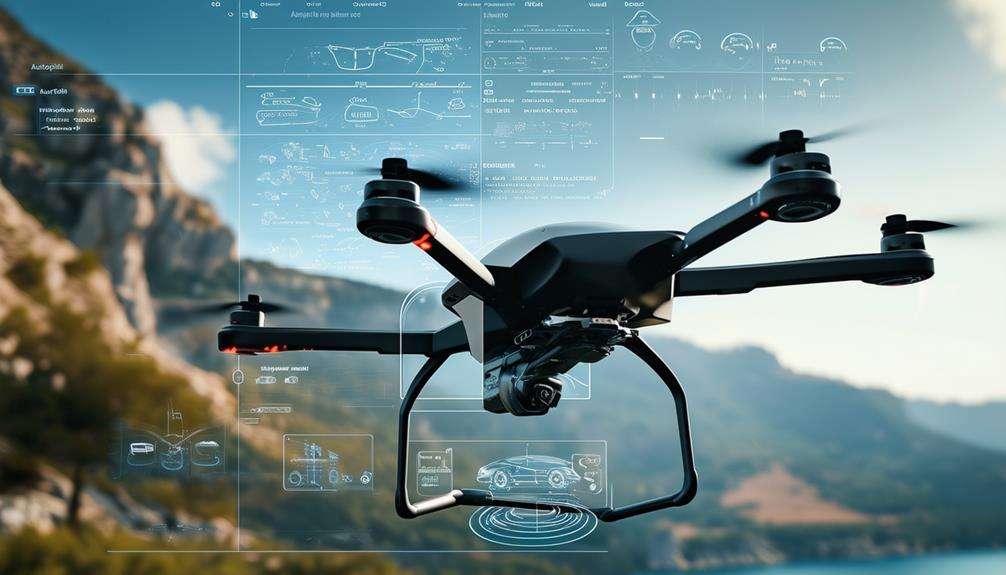
Switching between autopilot and manual control in hybrid control systems offers substantial benefits, enhancing the overall performance and safety of drone operations. These systems allow seamless transitions between autonomous autopilot and manual control, leveraging the strengths of both approaches.
One key advantage is mission continuity. When a drone encounters complex scenarios, operators can quickly switch to manual control to ensure the mission stays on track. This combination of autonomous navigation and human decision-making provides unmatched flexibility. Autopilot ensures precise navigation and consistent performance, while manual control allows real-time adjustments. This duality enables drones to handle a wide range of situations effectively.
Safety is significantly improved with hybrid control. In unexpected situations, immediate human intervention can adjust the flight path, reducing the risk of accidents and enhancing overall mission safety. Additionally, hybrid control systems optimize flight efficiency. Operators can rely on autopilot for routine tasks and switch to manual control for complex maneuvers, ensuring each flight is executed efficiently and safely.
Adopting hybrid control systems is a strategic choice for anyone serious about maximizing drone performance and safety.
Future Trends in Drone Navigation
The future of drone navigation is poised for a significant transformation through the integration of AI algorithms and machine learning, leading to enhanced autonomous capabilities. Drones will soon navigate various environments with minimal human intervention, driven by several key trends that merit attention.
- Autonomous Navigation: Advanced AI will enable drones to plan and execute routes independently, enhancing efficiency and reliability.
- Obstacle Avoidance: Leveraging LiDAR and computer vision technologies, drones will more effectively detect and avoid obstacles, ensuring safer operations.
- Swarm Intelligence: Multi-drone missions will become feasible, with drones communicating and collaborating to complete tasks more efficiently.
- Hybrid Navigation Systems: Integrating GNSS, inertial sensors, and visual odometry will create robust navigation systems, improving accuracy and reliability.
These advancements will enhance the efficiency and safety of drone operations and unlock new possibilities across various sectors. Whether for delivery services, agricultural monitoring, or search and rescue missions, the future of drone navigation promises to be exciting and transformative. Monitor these trends as they continue to shape the landscape of unmanned aerial technology.
Conclusion
Mastering drone navigation involves a seamless integration of autopilot precision and manual control flexibility. Autopilot systems, guided by advanced sensors, manage routine tasks effortlessly.
However, in critical situations, manual skills ensure safety and mission success. This hybrid approach provides efficiency and adaptability, making drone operation more effective. Embracing these technologies places you at the forefront of modern drone navigation.

